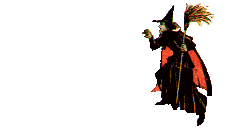Michael Maier (1566-1622)

Portrait from Symbola aureæ mensæ
duodecim nationum (Frankfurt, 1617)

In a number of works, he defended the Rosicrucians against
their critics. It seems unlikely that he
was actively involved in the early development of the
Rosicrucian myth during the early years of the seventeenth century, but
once it had become public through the publishing of the manifestos in 1614-1615,
Maier and Fludd were among the mysterious movement?s staunchest defenders.
 Maier's
works include the Arcana arcanissima [?the most secret secret?]
of 1614, the Lusus serius [?the serious past-time?] of 1616, Examen
fucorum [?the detection of the falsifications of pseudo-alchemists?]
in 1617, the Jocus severus [?the earnest jest?] and the Silentium
post clamores [?the silence after the clamour of the announcement of
the Rosicrucians?] of 1617, his famous emblem book, the Atalanta fugiens
[?Atalanta fleeing?] of 1617, Themis aurea [?golden Themis?] 1618,
Tripus
Aureus [?the golden tripod?] 1618,
Viatorium [?the wayfarer?s
guide?] 1618.
Maier's
works include the Arcana arcanissima [?the most secret secret?]
of 1614, the Lusus serius [?the serious past-time?] of 1616, Examen
fucorum [?the detection of the falsifications of pseudo-alchemists?]
in 1617, the Jocus severus [?the earnest jest?] and the Silentium
post clamores [?the silence after the clamour of the announcement of
the Rosicrucians?] of 1617, his famous emblem book, the Atalanta fugiens
[?Atalanta fleeing?] of 1617, Themis aurea [?golden Themis?] 1618,
Tripus
Aureus [?the golden tripod?] 1618,
Viatorium [?the wayfarer?s
guide?] 1618.
Maier saw his work as deeply religious, explaining the relationship of God to the cosmos. Like all other philosophical alchemists, he had a very high view of his calling and he was at pains in his writings to support the sublime truths of alchemy and hermetic philosophy against its detractors, and against the false alchemists and charlatans who gave the discipline such a bad reputation.
Maier's most celebrated work is Atalanta fugiens, hoc est, emblemata nova de secretis naturae chymica (Oppenheim, 1618), which contains 50 engravings of emblems. They each have a verse and an epigram associated with them, and a short prose discourse which elaborates a classical mythological interpretation of the symbolism in the emblem. The first emblem, for example, shows the North Wind as a bearded man carrying the fundamental principle of the alchemists, symbolised as a gestating child, in his belly.

Maier creates a ?fugue? to accompany each emblem, taking the form of a three-part canon, with a leading voice representing Atalanta, a pursuing voice Hippomenes and a simple base figure of three notes reflecting the golden apples. The music also is further elaborated by the fact that for certain emblems the music is a mirrored version, or inversion, (or sometimes places the notes in reverse order) of that found accompanying another emblem. Thus we have a complex musical interrelationship between emblems.
Atalanta fugiens, text, image and music
Bruce T. Moran, The Alchemical World of the German Court (1991) QD 131 .M673 1991
Karen Figala and Ulrich Neumann, " 'Author cui nomen Hermes Malavici': New light on the bio-bibliography of Michael Maier (1569-1622)", in Piyo Rattansi and Antonio Clericuzio, eds., Alchemy and Chemistry in the 16th and 17th Centuries (Dordrecht, 1994) 121-147 QD 13 .A39 1994
Sally G. Allen, "Outrunning Atalanta: Feminine destiny
in alchemical transmutation", Signs 6 (1980) 210-229
HQ 1101 .S5
Index